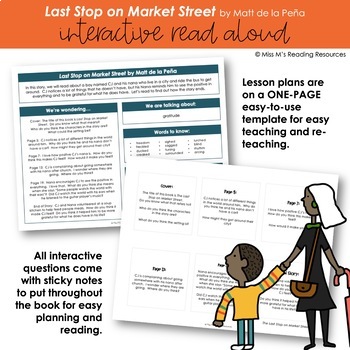

Review Source: De Colores: The Raza Experience in Books for ChildrenĪlso by this author: Love, Milo Imagines the World Your browser does not support the audio element.Last Stop on Market Street by Matt de la Peña
Listen to a recorded reading of this page:. Take a ten question quiz about this page. This record volume of shares was not broken for nearly 40 years. Over 16 million shares were traded on Black Tuesday. October 28-29 in 1929 is still the worst percentage two day crash of the market. The worst one day percentage fall of the U.S. When stocks become overvalued it is often called a "bubble.". Many banks that had invested in the stock market or loaned money to investors went out of business. Interesting Facts About the Stock Market Crash of 1929 It didn't recover all the way to back to its peak value of 1929 until the middle of the 1950s. The market reached rock bottom in 1932 and then made a mild recovery. While the stock market crash was not the only cause of the Great Depression, it did have a major impact. During this period, unemployment rose to around 25%, banks failed across the country, and hundreds of thousands of businesses went bankrupt. The stock market crash signaled the beginning of the Great Depression that would last for ten years until 1939. This caused a domino effect where more and more people had to sell. When the market began to fall, they had to sell quickly in order to pay their debts. 
People were buying stocks using credit - Many people were borrowing money to buy stocks (called "margin").Despite many signs that the economy was struggling, the market continued to rise.
 The economy - The economy had slowed down considerably and the stock market didn't reflect it. The stocks were worth much more than the real value of the companies they represented. Wild speculation - The market had grown too fast and stocks were overvalued. The stock market crashed for a number of reasons. Billions of dollars of wealth had been erased and the country entered into a deep economic depression. It didn't reach the bottom until the summer of 1932 when it had dropped 89% from its peak. Over the course of a few months, the stock market fell around 40%. These days became known as "Black Monday" and "Black Tuesday."Īlthough the market tried to rally, it couldn't recover. The worst days were October 28th and 29th when values fell a total of 23%. At the end of October, panic gripped the stock market and people began to sell massive amounts of stock. The economy could not continue to grow at such a rapid rate forever. The crazy growth in the stock market wasn't based on reality, however. Between 19 the stock market had grown by 600% with the Dow Jones Industrial Average rising from 63 points to 381 points. This optimism caused wild speculation in the stock market. People thought everyone was going to be rich and that the economy would never stop growing. New industries such as automobiles and radios were changing the landscape and culture of America. The 1920s (also called the Roaring Twenties) were a time of economic boom and business speculation. The crash signaled the start of the Great Depression that would last for more than ten years. Businesses had to layoff employees or go bankrupt. Many people lost all of their savings and ended up losing their homes.
The economy - The economy had slowed down considerably and the stock market didn't reflect it. The stocks were worth much more than the real value of the companies they represented. Wild speculation - The market had grown too fast and stocks were overvalued. The stock market crashed for a number of reasons. Billions of dollars of wealth had been erased and the country entered into a deep economic depression. It didn't reach the bottom until the summer of 1932 when it had dropped 89% from its peak. Over the course of a few months, the stock market fell around 40%. These days became known as "Black Monday" and "Black Tuesday."Īlthough the market tried to rally, it couldn't recover. The worst days were October 28th and 29th when values fell a total of 23%. At the end of October, panic gripped the stock market and people began to sell massive amounts of stock. The economy could not continue to grow at such a rapid rate forever. The crazy growth in the stock market wasn't based on reality, however. Between 19 the stock market had grown by 600% with the Dow Jones Industrial Average rising from 63 points to 381 points. This optimism caused wild speculation in the stock market. People thought everyone was going to be rich and that the economy would never stop growing. New industries such as automobiles and radios were changing the landscape and culture of America. The 1920s (also called the Roaring Twenties) were a time of economic boom and business speculation. The crash signaled the start of the Great Depression that would last for more than ten years. Businesses had to layoff employees or go bankrupt. Many people lost all of their savings and ended up losing their homes. 
The value of stocks fell dramatically over the course of several days at the end of October. The stock market crash of 1929 was one of the worst stock market crashes in the history of the United States. The Great Depression The Stock Market Crash History > The Great Depression








 0 kommentar(er)
0 kommentar(er)
